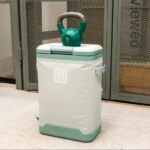The Firearms and Toolmarks section of a crime laboratory is responsible for examining and comparing tool marks. This specialized unit analyzes tools and the marks they leave behind on various surfaces to link them to specific crimes or tools.
The Role of the Firearms and Toolmarks Unit
This unit plays a crucial role in forensic investigations by providing detailed analysis of tools and tool marks. Their primary responsibilities include:
Firearms Examination:
- Operability Testing: Firearms are tested to ensure they function correctly. If a firearm is malfunctioning, technicians attempt to repair it to operational status for further analysis.
- Ammunition Comparison: Experts compare bullets, cartridge cases, and shotshells to determine if they were fired from the same firearm or multiple firearms. Microscopic analysis helps identify unique markings left by the firearm on these components.
Toolmark Analysis:
- Tool Mark Comparison: The unit examines tool marks left on various surfaces like wood, metal, or plastic. They compare these marks to determine if they were made by a specific tool or if a particular tool could have created the mark. This involves comparing the unique striations and impressions left by the tool.
- Physical Fit Examination: This process involves attempting to match broken or separated pieces of an object, like a tool or other item, to see if they were originally a single unit. This can provide crucial evidence linking a suspect to a crime scene.
Other Key Functions:
- Distance Determination: By analyzing gunshot residue patterns on clothing or other materials, experts can estimate the distance between the firearm and the target at the time of firing.
- Serial Number Restoration: The unit uses specialized techniques to restore obliterated serial numbers on firearms and other objects, aiding in tracing the item’s history and ownership. This often involves chemical or electrochemical methods to reveal the original markings.
Technology and Techniques Used
The Firearms and Toolmarks unit utilizes a variety of advanced tools and techniques:
- Comparison Microscopes: These specialized microscopes allow examiners to visually compare two objects side-by-side, crucial for identifying matching striations on bullets and tool marks.
- Photography and Imaging: High-resolution photography and digital imaging are used to document evidence and create detailed records of tool marks and firearms.
- Chemical Etching: This technique helps reveal obliterated serial numbers by selectively corroding the metal surface around the stamped characters.
Importance in Criminal Investigations
The work of the Firearms and Toolmarks unit is essential for solving a wide range of crimes:
- Linking Suspects to Crime Scenes: Matching tool marks found at a crime scene to a suspect’s tools can provide strong evidence of their involvement.
- Reconstructing Crime Scenes: Analyzing bullet trajectories and tool marks can help investigators reconstruct the sequence of events during a crime.
- Identifying Weapons Used in Crimes: Firearms examination can link specific weapons to particular crimes, aiding in tracing the source of the firearm and potentially identifying other related criminal activity.
Conclusion
The Firearms and Toolmarks unit provides critical forensic analysis that plays a vital role in criminal investigations. By meticulously examining firearms, ammunition, and tool marks, these experts provide valuable evidence that helps solve crimes and bring perpetrators to justice. Their specialized knowledge and advanced techniques are essential for linking suspects to crime scenes, reconstructing events, and ensuring accurate and reliable forensic evidence is presented in court.
[
